
Rønne is the largest town on the Danish island of Bornholm in the Baltic Sea. It has a population of 13,796. Once a municipality in its own right from 1970 until 2002, when Bornholm was a county with an area of 29.11 square kilometres, it is now the administrative centre of the Bornholm municipality. As of 2018 11,539 inhabitants live in Rønne Parish, which is a narrow piece of land on the westernmost of the island and stretching north and southward comprising around a third of the area of the former municipality. Knudsker Parish made up the rest of the former municipality. Not all inhabitants of either Rønne or Knudsker (400-7553) parishes live in the city of Rønne.

Hildesheim[ˈhɪldəsˌhaɪ̯m](listen) is a city in Lower Saxony, Germany with 101,693 inhabitants. It is in the district of Hildesheim, about 30 km (19 mi) southeast of Hanover on the banks of the Innerste River, a small tributary of the Leine River.

Hemer is a town in the Märkischer Kreis district, in North Rhine-Westphalia, Germany.
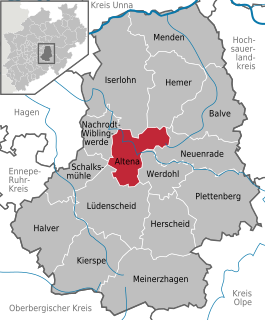
Altena is a town in the district of Märkischer Kreis, North Rhine-Westphalia, Germany. The town's castle is the origin for the later Dukes of Berg. Altena is situated on the Lenne river valley, in the northern stretches of the Sauerland.

Soest is a city in North Rhine-Westphalia, Germany. It is the capital of the Soest district.

Lichtenfels is a small town in Waldeck-Frankenberg district in northwest Hesse, Germany.

Northeim is a town in Lower Saxony, Germany, seat of the district of Northeim, with, in 2011, a population of 29,000. It lies on the German Half-Timbered House Road.

Lindlar is a municipality in the Oberbergischer Kreis, in North Rhine-Westphalia, Germany. It is located about 30 km east of Cologne.
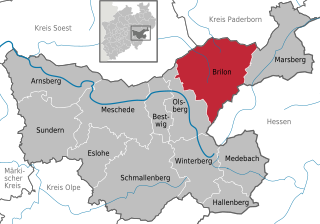
Brilon is a town in North Rhine-Westphalia, central Germany, that belongs to the Hochsauerlandkreis.

Eltville am Rhein is a town in the Rheingau-Taunus-Kreis in the Regierungsbezirk of Darmstadt in Hesse, Germany. It lies on the German Timber-Frame Road.
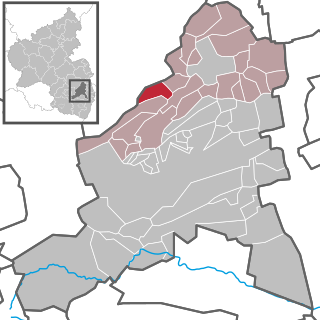
Hettenleidelheim is an Ortsgemeinde – a municipality belonging to a Verbandsgemeinde, a kind of collective municipality – in the Bad Dürkheim district in Rhineland-Palatinate, Germany. Until 2018, it was the seat of the like-named Verbandsgemeinde.
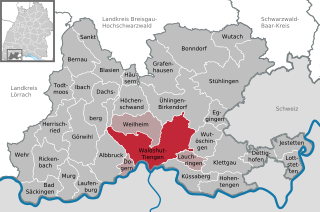
Waldshut-Tiengen, commonly known as Waldshut, is a city in southwestern Baden-Württemberg right at the Swiss border. It is the district seat and at the same time the biggest city in Waldshut district and a "middle centre" in the area of the "high centre" Lörrach/Weil am Rhein to whose middle area most towns and communities in Waldshut district belong. There are furthermore complexities arising from cross-border traffic between this area and the Swiss cantons of Aargau, Schaffhausen and Zürich. This classification relates to Walter Christaller's Central Place Theory, however, and not to any official administrative scheme.

Frankenberg an der Eder is a town in Waldeck-Frankenberg district, Hesse, Germany.

Hottenbach is an Ortsgemeinde – a municipality belonging to a Verbandsgemeinde, a kind of collective municipality – in the Birkenfeld district in Rhineland-Palatinate, Germany. It belongs to the Verbandsgemeinde Herrstein-Rhaunen, whose seat is in Herrstein.

Schnorbach is an Ortsgemeinde – a municipality belonging to a Verbandsgemeinde, a kind of collective municipality – in the Rhein-Hunsrück-Kreis (district) in Rhineland-Palatinate, Germany. It belongs to the Verbandsgemeinde Simmern-Rheinböllen, whose seat is in Simmern.
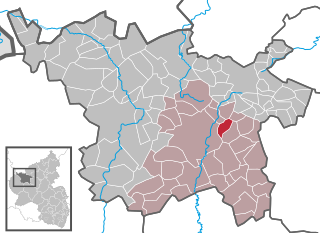
Hörscheid is an Ortsgemeinde – a municipality belonging to a Verbandsgemeinde, a kind of collective municipality – in the Vulkaneifel district in Rhineland-Palatinate, Germany. It belongs to the Verbandsgemeinde of Daun, whose seat is in the like-named town.

Wallenborn is an Ortsgemeinde – a municipality belonging to a Verbandsgemeinde, a kind of collective municipality – in the Vulkaneifel district in Rhineland-Palatinate, Germany. It belongs to the Verbandsgemeinde of Daun, whose seat is in the like-named town. The municipality is a state-recognized tourism community (Fremdenverkehrsgemeinde).
Ratingen-Homberg is that part of the city of Ratingen, in Mettman district, North Rhine-Westphalia that, until the bringing of industrialisation to the city, was the independent village of Homberg - at that time being in the district Homberg-Meiersberg, with its scenic churches, one Protestant and one Catholic.

Gulbene is a town in northeastern Latvia. It is an administrative center of Gulbene Municipality.

St. Patrokli is a Roman Catholic parish and church in Soest, Germany. The church is of great significance in the history of architecture as it is the epitome of Romanesque architecture in Westphalia. As a result, it is known as St.-Patrokli-Dom. It holds relics of its patron saint Patroclus of Troyes from 954. It was the church of the canonical foundation of St. Patroclus, which existed from the 10th century until its abolition in 1812. Since 1823 the church has been the parish church of the St. Patrokli parish in the diocese of Paderborn. In 1859 it was promoted to the rank of provost church.























